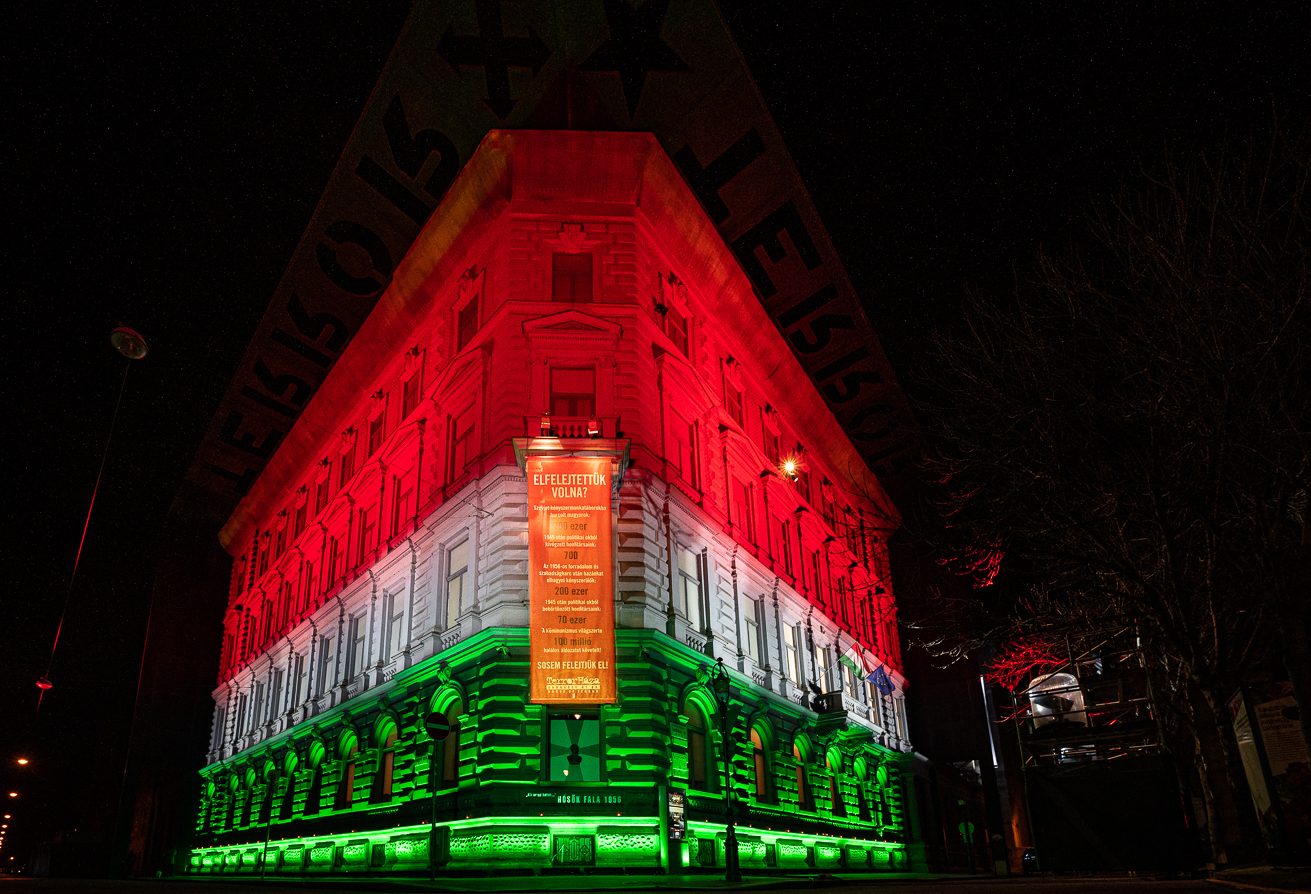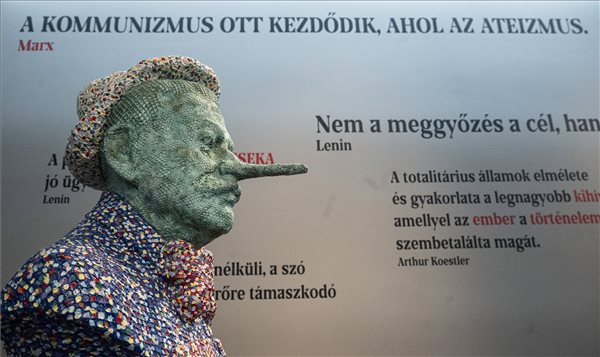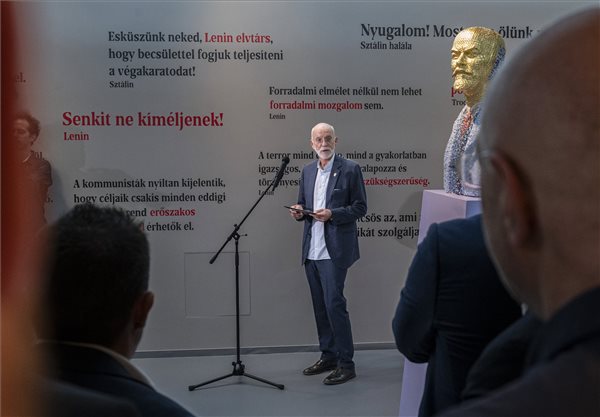
"The Museum was the first step in a process in which the post-communists lost their unlimited monopoly."Continue reading

Visitors can see, among other figures, deaf, blind, and mute Lenins and Stalins in bow ties and hats, their noses swollen from lying, at the temporary exhibition “It Takes a Great Ideal to Produce a Great Crime,” at the House of Terror Museum, presenting the works of American-Hungarian artist Sam Havadtoy (Sámuel Havadtőy).
Sam Havadtoy is an artist who has lived through dictatorships, but has kept a contemporary perspective, and an ironic view of its once-dreaded figures, said Mária Schmidt, director general of the House of Terror Museum, at the opening of the exhibition. She emphasized that
the artist recreated the infamous sculptures of the communist leader as deaf, blind, and mute Lenins using the material that had been characteristic of him for decades: lace.
It Takes a Great Ideal to Produce a Great Crime! – New temporary exhibition in the @terrorhaza pic.twitter.com/78JcDz669w
— Mária Schmidt (@schmidtmariaHU) September 28, 2023
The busts of Lenin in the exhibition are bigger than the busts of Stalin, the director general pointed out, adding that the “real arch-villain” was indeed Lenin, and that Stalin, as a “man of practice,” was realizing his nightmare.
Rajmund Fekete, director of the Institute for the Research of Communism, recalled that Soviet Russia building socialism, and later the Soviet Union, experimented with building a new society for seven decades. The Soviet model was a totalitarian dictatorship from the first moment to the last, legitimized by terror.
Despite its promises, it brought neither abundance, brotherhood, nor freedom, but it claimed the lives of more than 100 million people worldwide.

Sam Havadtoy during his speech at the exhibition opening. Photo via MTI/Szigetváry Zsolt
Havadtoy noted that the material for the exhibition was completed over a period of ten years, first the Lenin busts, then the Stalin ones, and finally the two paintings on display.
Speaking about their history, he said that in Russia a few years ago, when they were restoring a portrait of Lenin painted by Vladislav Izmailovich in 1924, they found a portrait of Nicholas II of Russia painted earlier by Ilya Galkin on the other side of the canvas, Havadtoy has recreated both works, now on separate canvases, in his own distinctive style, with lace as the backdrop for two notable figures of Russian history.

The two paintings. Photo via Facebook/Terror Háza Múzeum / House of Terror Museum
Via MTI, Featured image via MTI/Szigetváry Zsolt